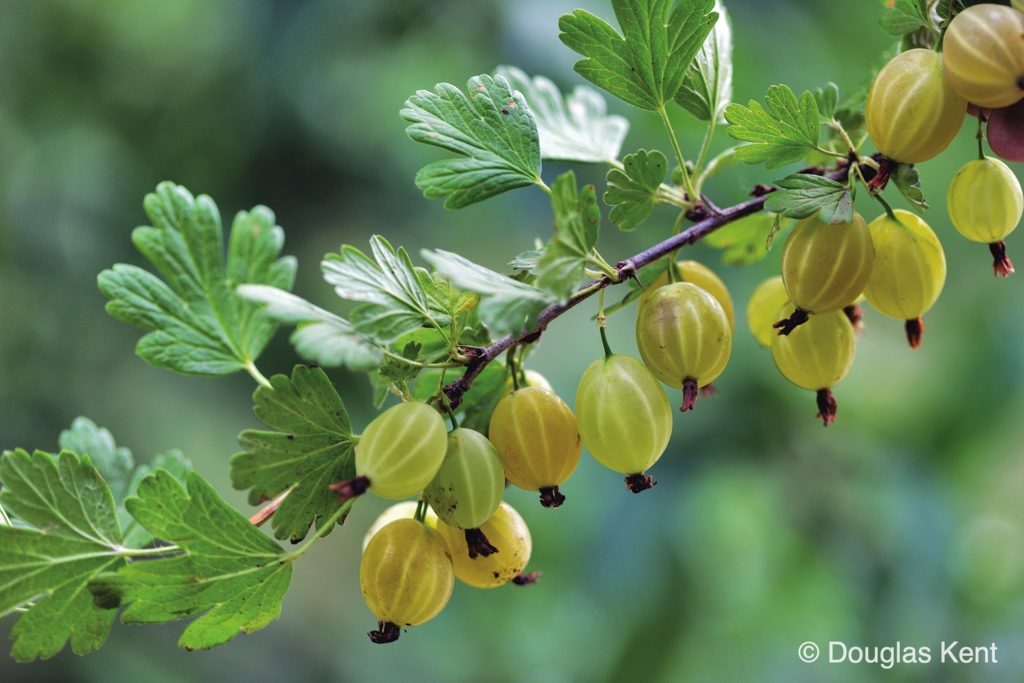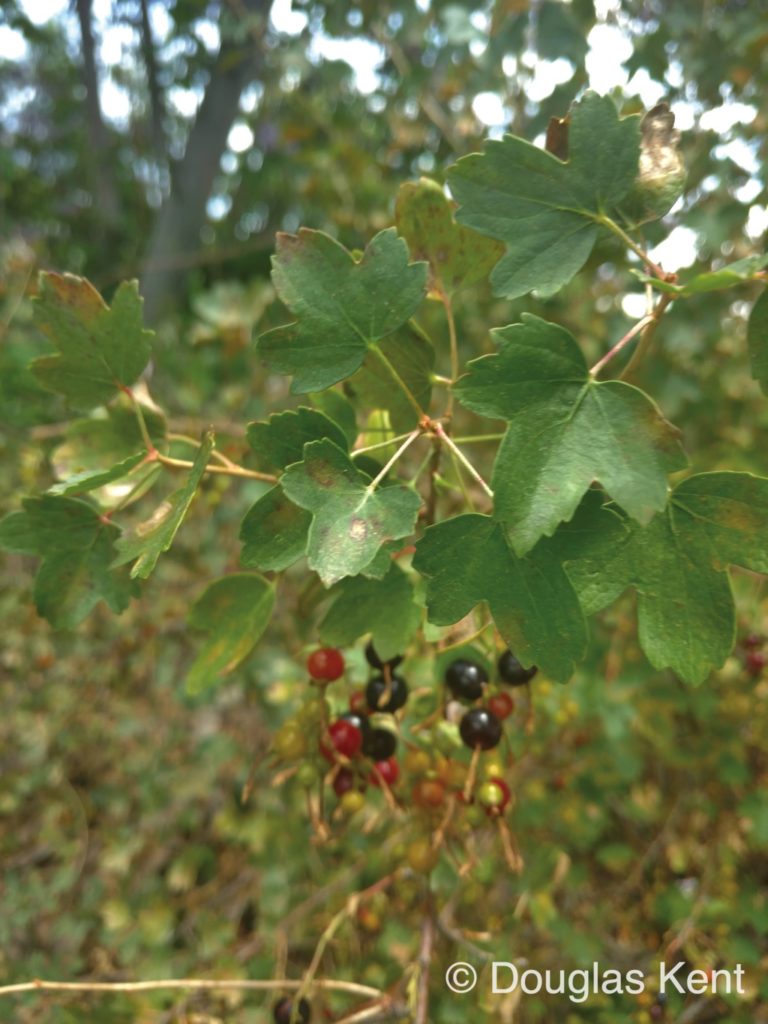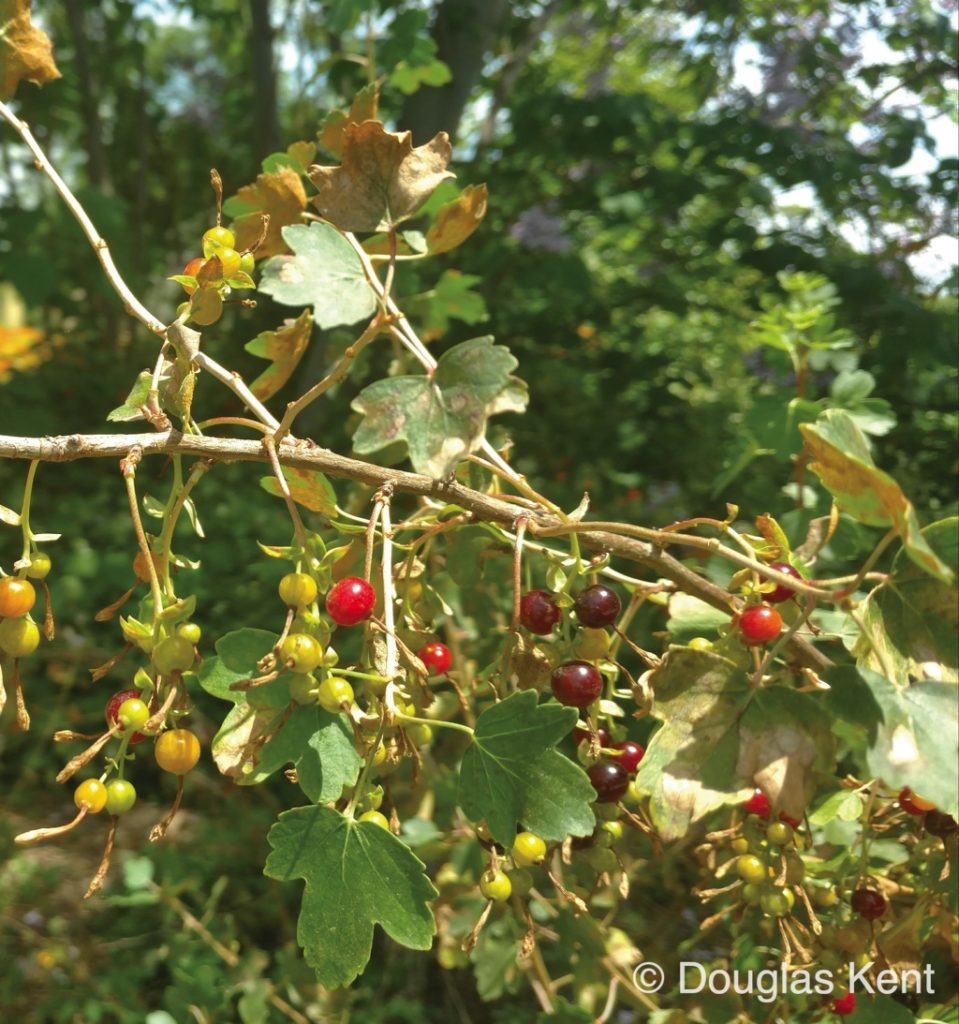
Berries are Edible and Divine—Here is Why
In today’s post, Douglas Kent, author of Foraging Southern California, talks to us about foraging currants and gooseberries (Ribes). High in nutrients, sugars, and ridiculously easy to eat, berries are favorites of hikers, bikers, and explorers.
It is a whimsical delight best shared with others. Better yet, many of the best berries ripen in summer, the peak period for beginning foragers.

Habitat: There are more than 35 different species of Ribes growing in Southern California. They can be found along the coast, throughout the mountains, and in the more protected areas of the desert. They can even be found on Catalina Island and at elevations of up to 10,000 feet. Look for them in cool canyons, below forests, and above streams.
Growth: The height and width vary greatly between species: they can be 2–12 feet tall and 1–10 feet wide; the plants are generally woody and airy. Gooseberries have thorns and spines along their branches, stems, and fruits; currants do not. Mountainous species are deciduous; coastal speccies are evergreen. The best way to identify Ribes is through their leaves.

Leaves: While leaf size varies greatly between species, the general leaf pattern is the same: older leaves have 5 lobes (palmately lobed), and younger leaves have 3 lobes. Distinct and indented veins run down the middle of the lobes; the leaf surface texture is coarse, and the margins are lightly toothed.
Flowers: Dangling from wispy stems along branches, petite flowers cascade from the area near the axis of the branches and leaves. They are tiny and resemble fuchsia. The flowers have 5–6 sepals, 5 tiny petals, and 5 noticeable stamens. Colors range from coral, pink, and red to white, green, and yellow. Ribes blooms between January and July. The flowers are a delight but easy to miss.
Berry: Small and shaped like a blueberry, some varieties are vigorous fruit producers, while others aren’t. Berries are no larger than 0.6 inch in diameter. Berry color varies from blue and green to pink, purple, red, white, and yellow.

Season: Coastal berries begin to ripen in spring; mountainous varieties ripen in summer.
Benefits: Berries are high in iron, phosphorus, and vitamin C.
Comparable Species: Young Ribes leaves have 3 lobes and look somewhat similar to the leaves of poison oak. If all the leaf’s margins are joined at the 3 lobes, it is not poison oak.
Notes: While all Ribes berries are edible, not all are tasty. Many are astringent. Berries are eaten raw, dried, or cooked.
Good to Know
Not all berries are heaven’s gift. Some will make you seriously ill. As a rule, always compare your finds to the comparable species. Check out Foraging Southern California by Douglas Kent or any other reputable book or website. In other words, stick with the berries you know until you have foraged often and feel comfortable around a large variety of fruit-bearing plants. Always rinse and clean berries before eating.
If you enjoyed this post, sign up for our newsletter now!



Pingback: Foraging Southern California Wins 2020 NOBA Book Award - Adventure Publications